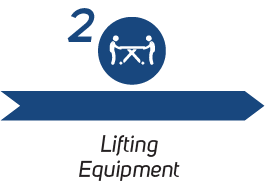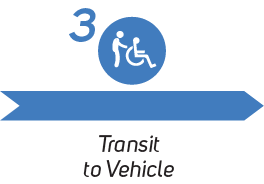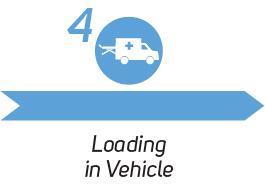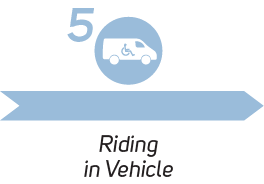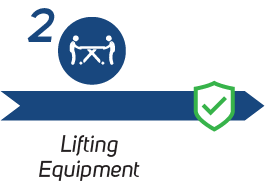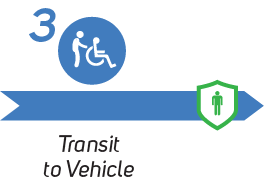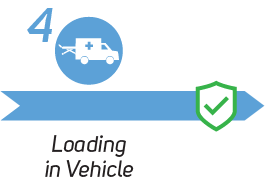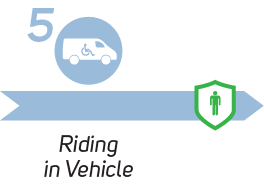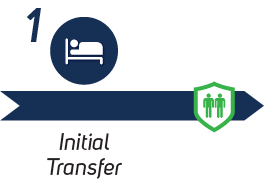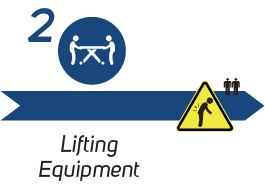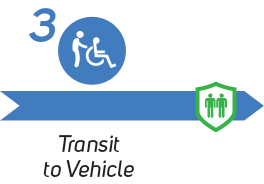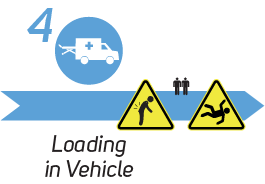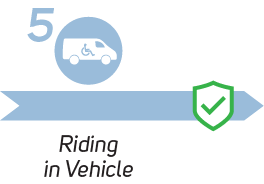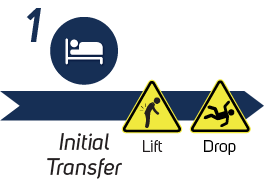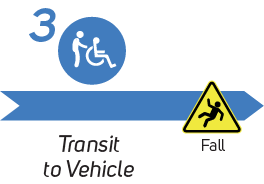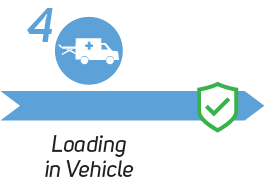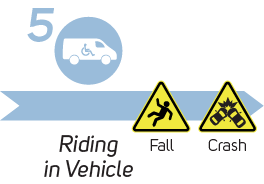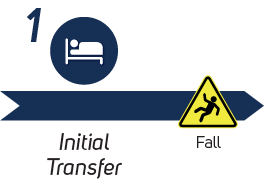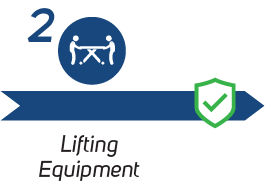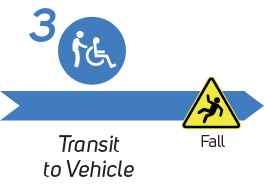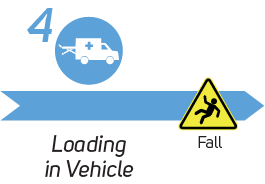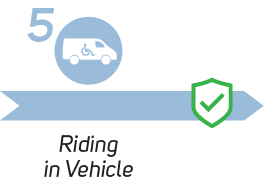How Does No-lift NEMT Reduce Risk?
Get a quick overview with our Risk Mitigation flier.
Identifying Recurring Risk in Medical Transport
To identify how risk is introduced into medical transportation, we will do the following:
- Identify Five Recurring High-risk Events
- Label Risks with Identifiable Icons
- Compare 4 Transport Methods:
- No-lift NEMT
- Gurney/Stretcher Transport
- Wheelchair Transport
- Ambulatory Transport
Medical Transport Risk Timeline
Five High Risk Events
Five high risk events occur in medical transportation:
- Transfer – The initial transfer from the bed to or chair to a gurney or wheelchair. (Or vice versa)
- Lifting Equipment – Maneuvering, lifting, or lowering a stretcher/gurney with a patient onboard
- Transit to Vehicle – Moving a patient, whether ambulatory, via wheelchair, or on a gurney, to the vehicle
- Loading in Vehicle – Onboarding, loading, or unloading of the patient in or out of the vehicle
- Riding in Vehicle – Transporting a patient in a moving vehicle.
Recognizing these high-risk events, we can attempt to mitigate the risk involved with proper equipment and effective techniques.
How We Keep It Simple
In order to explain the risks factors in medical transport in easily understandable ways, follow the risk as though we are moving from a facility bed (although the patient could be at home on their sofa or finishing up an appointment in a dialysis chair) to a vehicle.
Risk is Round Trip
As you examine these risk factors, remember that transport goes two ways: from a bed to a vehicle and from a vehicle to a bed (or other destination). Risk factors may differ slightly going the other direction, but the underlying processes and risk factors are the same. The transport methods we will explore introduce the same risks regardless if the patient is leaving or arriving.


